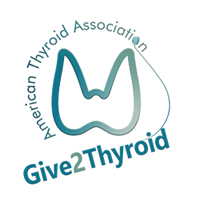ABBREVIATIONS & DEFINITIONS
 Thyroid Ultrasound: a common imaging test used to evaluate the structure of the thyroid gland. Ultrasound uses soundwaves to create a picture of the structure of the thyroid gland and accurately identify and characterize nodules within the thyroid. Ultrasound is also frequently used to guide the needle into a nodule during a thyroid nodule biopsy.
Thyroid Ultrasound: a common imaging test used to evaluate the structure of the thyroid gland. Ultrasound uses soundwaves to create a picture of the structure of the thyroid gland and accurately identify and characterize nodules within the thyroid. Ultrasound is also frequently used to guide the needle into a nodule during a thyroid nodule biopsy.
Thyroid scan: this imaging test uses a small amount of a radioactive substance, usually radioactive iodine, to obtain a picture of the thyroid gland. A “cold” nodule means that the nodule is not functioning normally. A patient with a “cold” nodule should have a fine needle aspiration biopsy of the nodule. A “functioning”, or “hot”, nodule means that the nodule is taking up radioactive iodine to a degree that is either similar to or greater than the uptake of normal cells. The likelihood of cancer in these nodules is very low and a biopsy is often not needed.
Papillary thyroid cancer: the most common type of thyroid cancer. There are 4 variants of papillary thyroid cancer: classic, follicular, tall-cell and noninvasive follicular thyroid neoplasm with papillary-like nuclear features (NIFTP).
Total thyroidectomy: surgery to remove the entire thyroid gland.
Radioactive iodine (RAI): this plays a valuable role in diagnosing and treating thyroid problems since it is taken up only by the thyroid gland. I-131 is the destructive form used to destroy thyroid tissue in the treatment of thyroid cancer and with an overactive thyroid. I-123 is the non-destructive form that does not damage the thyroid and is used in scans to take pictures of the thyroid (Thyroid Scan) or to take pictures of the whole body to look for thyroid cancer (Whole Body Scan).
Central neck compartment: the central portion of the neck between the hyoid bone above, and the sternum and collar bones below and laterally limited by the carotid arteries.
Prophylactic central neck dissection: careful removal of all lymphoid tissue in the central compartment of the neck, even if no obvious cancer is apparent in these lymph nodes.




